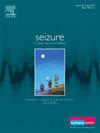发育性脑病、癫痫性脑病和全身性癫痫:一例癫痫伴肌阵挛性失张力发作的病例报告和现有证据的系统回顾
IF 2.7
3区 医学
Q2 CLINICAL NEUROLOGY
引用次数: 0
摘要
研究背景cenobamate (CNB)在治疗耐药局灶性癫痫(FE)方面表现出显著的疗效。然而,其在其他癫痫类型中的作用,如耐药全面性癫痫(GEs)、广泛性和局灶性合并癫痫(CGFEs)以及发育性和癫痫性脑病(DEEs),仍未得到充分探讨。本文评估了目前CNB在这些复杂且具有挑战性的患者群体中的疗效证据。方法报告1例22岁男性耐药癫痫合并肌阵挛性失张力发作(EMAtS)患者,经CNB治疗后癫痫发作自由。我们进行了系统的文献综述,以评估CNB对GEs、CGFEs和dei的疗效,总结癫痫发作结果、不良事件(ae)和剂量-反应关系。结果该病例报告强调了患者实现18个月的持续癫痫发作自由,并通过逐渐减少抗癫痫药物(asm)改善了生活质量。系统评价包括来自6项研究的32名患者。总体而言,59.4%的患者癫痫发作减少≥50%,9.4%的患者癫痫发作自由。亚组分析显示,50%的lenox - gastaut综合征(LGS)和80%的Dravet综合征(DS)患者癫痫发作自由率分别为20%和50%,其中DS和EEM患者癫痫发作自由率分别为50%。74%的患者报告了不良反应,主要是镇静和疲劳,而31.25%的患者减少或逐渐减少了不良反应。cnb显示了治疗耐药癫痫综合征发作的潜在疗效,将其既定用途扩展到FE以外。需要进一步的前瞻性试验来验证这些发现并优化给药策略。本文章由计算机程序翻译,如有差异,请以英文原文为准。
Cenobamate in developmental and epileptic encephalopathies and generalized epilepsies: A case report on epilepsy with myoclonic-atonic seizures and systematic review of current evidence
Background
Cenobamate (CNB) has demonstrated remarkable efficacy in the treatment of drug-resistant focal epilepsy (FE). However, its role in other epilepsy types - such as drug-resistant generalized epilepsies (GEs), combined generalized and focal epilepsies (CGFEs), and developmental and epileptic encephalopathies (DEEs) - remains poorly explored. This article assesses the current evidence of CNB efficacy in these often complex and challenging patient populations.
Methods
A case report is presented detailing a 22-year-old male with drug-resistant epilepsy with myoclonic-atonic seizures (EMAtS) who achieved seizure freedom on CNB. A systematic literature review was conducted to evaluate CNB's efficacy in GEs, CGFEs, and DEEs, summarizing seizure outcomes, adverse events (AEs), and dose-response relationships.
Results
The case report highlights a patient achieving 18 months of sustained seizure freedom and improved quality of life with tapering of concomitant antiseizure medications (ASMs). The systematic review included 32 patients from six studies. Overall, 59.4 % achieved a ≥ 50 % seizure reduction, and 9.4 % attained seizure freedom. Subgroup analysis showed ≥50 % reduction in 50 % of patients with Lennox-Gastaut syndrome (LGS) and 80 % with Dravet syndrome (DS), with seizure freedom rates of 20 % in DS and 50 % in epilepsy with eyelid myoclonia (EEM). AEs, primarily sedation and fatigue, were reported in 74 % of patients, while 31.25 % reduced or tapered off ASMs.
Discussion
CNB demonstrates potential efficacy in managing seizures across drug-resistant epilepsy syndromes, extending its established use beyond FE. Further prospective trials are needed to validate these findings and optimize dosing strategies.
求助全文
通过发布文献求助,成功后即可免费获取论文全文。
去求助
来源期刊

Seizure-European Journal of Epilepsy
医学-临床神经学
CiteScore
5.60
自引率
6.70%
发文量
231
审稿时长
34 days
期刊介绍:
Seizure - European Journal of Epilepsy is an international journal owned by Epilepsy Action (the largest member led epilepsy organisation in the UK). It provides a forum for papers on all topics related to epilepsy and seizure disorders.
 求助内容:
求助内容: 应助结果提醒方式:
应助结果提醒方式:


